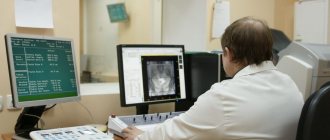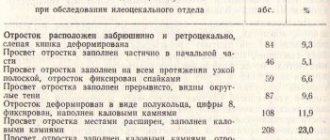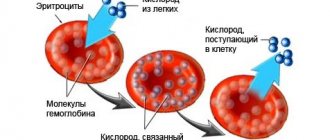Share article on social networks:
The child's menu for anemia is adjusted so as not only to increase the level of iron in the blood, but also to prevent further relapses of the disease. For the purpose of prevention, it is also necessary to take iron-containing preparations that help prevent oxygen starvation of organs and tissues.
A low hemoglobin level, determined using a qualitative blood test, is the first sign of iron deficiency. Hemoglobin is a complex protein that contains copper, zinc, cobalt, manganese, and iron. The child can obtain all these substances in full from food. In order for micro and macroelements to be well absorbed, you need to control the presence of ascorbic and folic acids and B vitamins in food.
Nutrition for low hemoglobin in children
The best way to increase hemoglobin is boiled beef liver dishes. To feed very young children, beef by-products are replaced with veal or turkey. Conventionally, 100g of boiled liver contains approximately 29.7 mg of iron, but only 20% of this amount is adequately absorbed.
That is, about 6 mg of essential heme iron. Almost all 6 mg will be spent by the body on the production of hemoglobin. And if we take, for example, the source of non-heme iron - hazelnuts, then 100 mg will contain 51 mg of the element, and only about 6% is absorbed, which is approximately equal to 3 mg. Non-heme iron will be spent on other needs of the body, bypassing the process of synthesis of complex proteins.
But it is quite easy to overdo it on the corrective menu, since in addition to iron, the liver contains a lot of vitamin D and A. And their surplus inevitably leads to hypervitaminosis, which is undesirable for the child. If children are raised as vegetarians, or suffer from a chronic illness that requires restrictions on meat consumption, then it is better to replace the liver with products containing non-heme iron.
It must be remembered that the synthesis of hemoglobin from non-heme iron is possible only with the participation of ascorbic acid, and therefore all salads for a child with signs of anemia must certainly be sprinkled with freshly squeezed lemon juice. Squeeze half a medium citrus onto one serving plate. The same juice is successfully added to fruit and vegetable juices and fresh juices.
A mixture of beet and carrot juice, taken in equal proportions, helps greatly. For every 250 ml of juice you need to squeeze one lemon slice. It is recommended to give the cocktail to your child 2 times a day. And if the main reason for the decrease in hemoglobin levels is eliminated, then the blood condition will return to normal within a few weeks.
The diet of children with iron deficiency anemia must include cereals, but they are not so effective. As soon as the cereal is cooked, if we are talking about buckwheat, millet or rice, then only 1% of iron can be absorbed from it. But at the same time, cereals flavored with herbs are an excellent source of essential acids, including folic acid. And folic acid is the most important catalyst in the process of hemoglobin production, and therefore porridge cannot be ignored.
Prevalence in the world
Almost 25% of the population worldwide is affected by anemia, with the highest prevalence among preschool children (47.4% or 293 million). In schoolchildren, this condition is detected in 25.4% of cases (305 million). In 9 out of 10 preschool children, anemia is caused by iron deficiency in the body, and in one (or 10% of cases) it is a symptom of a pathology, such as leukemia. Source: WHO Global Database on Anaemia Geneva, World Health Organization, 2008
Standards for hemoglobin content in the blood for children under 18 years of age
| Child's age | Norm of hemoglobin content per unit of blood, g/l |
| 0-2 weeks | 125-220 |
| 0.5-1 month | 115-180 |
| 1-2 months | 90-130 |
| 2 months – 0.5 years | 95-140 |
| 0.5-1 year | 105-140 |
| From 1 to 5 years | 100-140 |
| From 5 to 12 years | 115-150 |
| More than 12 years | 115-160 |
Diet for low hemoglobin in children
If a baby is diagnosed with a low hemoglobin level, then parents need to contact a nutritionist and receive individual diet instructions. The diet should be rich in iron-rich foods.
Dishes made from animal products are considered a source of essential protein. For example, marine fish, red meat, dairy products. And some plant foods: all types of legumes, including soy and beans, as well as nuts. The diet for anemia in children includes dishes with a high content of manganese, copper, iron and zinc. There are many of them in:
- Beef and beef tongue, rabbit, pork liver.
- Black caviar.
- Buckwheat, oatmeal.
- Bell peppers, Brussels sprouts.
- Spinach, green onions, sorrel.
- Quince, grenade.
These same products also contain vitamins that promote the absorption of iron from the gastrointestinal tract. If it is necessary to include food with a high content of vitamin C in the diet, parents are recommended to give their child a decoction of black currant fruits.
Nutrition for anemia in children must be complete, replete with raw vegetables and fruits. Because folic acid can be destroyed during cooking and cooking. And without its participation in metabolic processes, it will not be possible to normalize hemoglobin levels.
But you can’t literally “feed” a child only meat; balance is the most important thing in a diet. For children under one year old, only 40 grams of meat products per day is enough, for older children - from 200 to 300 grams. But the hemoglobin level will not increase if, in parallel with nutritional correction, you do not take multivitamin complexes, which include both iron itself and its preparations. A proper diet should never be perceived as the only treatment for anemia; it can only complement previously prescribed therapy.
Low hemoglobin in a child: what is undesirable to eat
The child should stop drinking tea, and any type of this drink is prohibited, as they enrich the body with free radicals, which complicate the absorption and absorption of iron. As an analogue, children can be offered cocoa, but without milk. It appears to be an abundant source of iron and promotes its absorption.
Very often, parents are faced with information about a categorical ban on drinking milk in case of anemia in children. But this is not entirely correct, although there are still grounds for doubt. Milk is rich in calcium, which is known to interfere with the absorption of iron.
But at the same time, calcium itself can be absorbed and processed by the body in just a few hours, but the body’s need for it is extremely high and it is very stupid to refuse dairy products. The correct approach to this issue looks like this: you should not consume milk at the same time as food intended to correct hemoglobin levels.
Do you need vitamin supplements?
As mentioned above, if there is an iron deficiency, the child will be prescribed certain vitamin complexes. They should contain vitamins B, PP and C. Pharmacology offers many different combined formulations, but you cannot choose them arbitrarily. Many of these remedies are merely clones of each other, but others are highly specific and intended to be used for specific health problems. It is necessary to show the child to a specialized doctor, who during the appointment will prescribe the necessary complex.
As for the choice of nutritional supplements, everything is somewhat simpler. The child can be given Hematogen or brewer's yeast. They are extremely cheap and have proven results. However, Hematogen has a number of contraindications based on the child’s body’s rejection of foreign proteins.
There is no need to impose strict dietary restrictions and “stuff” the child only with healthy food. His body is already weakened by anemia, so serious dietary restrictions can worsen the situation. In addition, children may simply not like certain foods, or they may show signs of individual intolerance. All these nuances must certainly be taken into account.
Causes of anemia in children
This diagnosis can be made for various reasons, including:
- Poor nutrition, iron deficiency.
For these reasons, the child’s body produces a small number of red blood cells. - Family history of sickle cell anemia.
This inherited disorder causes excessive destruction of red blood cells. - Large blood loss.
This happens due to injury, and in girls it can occur against the background of heavy menstrual bleeding. - The cause of anemia in newborns and infants
can be multiple pregnancies, a long and severe lack of iron in the body of the expectant mother, improper placental-uterine circulation, prematurity, labor hemorrhage, too late or premature ligation of the umbilical cord. - A group of postpartum factors
that cause anemia in early childhood: a poor diet, including mainly dairy products, early initiation of artificial feeding, iron deficiency in food, late introduction of complementary foods, lack of animal protein in the diet, rickets, frequent diseases. - Impaired absorption of iron by the intestines.
The reasons may be: dysbacteriosis, impaired intestinal absorption syndrome, food allergies, gastritis and other gastrointestinal diseases, some diseases of the pancreas and liver, large and small intestines. - Accelerated growth rates
and increased need for iron against the background of its loss. - Impaired iron metabolism
, which appears due to hormonal changes in the body. - Bleeding
– not only wound bleeding, but also nasal bleeding. - Physical inactivity
, prolonged stay in a stationary position, rare walks in the fresh air. - Hemolysis
, that is, the destruction of red blood cells, as well as a decrease in the production of red blood cells by the bone marrow. - Infections
, parasitic diseases, bacterial pathologies. - Malignant and benign tumors
in various parts of the body. - Exposure to radiation.
- Poisoning
with drugs and toxic substances. This also includes a long and unsupervised course of antibiotics, non-steroidal anti-inflammatory drugs, cytostatics, etc. - Deficiency of vitamins
, primarily
B12 and C
, necessary for the absorption of sufficient amounts of iron. Source: N.L. Prokoptseva, N.A. Ilyenkova Iron deficiency anemia in children: diagnosis, treatment and prevention // Siberian Medical Review, 2011
Symptoms of anemia in children
Regardless of the type of anemia, the child may have the following signs of pathology
, especially when it lasts for a long time:
- pallor of the skin and mucous membranes;
- pigmentation, dryness, flaking of the skin;
- decreased appetite;
- changes in taste and smell;
- stomatitis, caries;
- various disturbances in the process of digestion and absorption of nutrients: nausea, heartburn, unstable stools, gastritis;
- emotional instability, irritability, excitability;
- developmental delay;
- lethargy, lethargy, apathy, fatigue;
- shortness of breath, hypotension, rapid heartbeat;
- weakness of the bladder sphincter (manifested by urinary incontinence);
- decreased immunity;
- exhaustion;
- dizziness;
- desire to consume unusual foods or completely inedible substances;
- swollen or sore tongue;
- delayed wound healing;
- sleep disorders;
- constipation or diarrhea;
- noise in ears.
Types of anemia in children
There are several classifications of this disease.
Anemia occurs due to:
- physical (injuries, surgeries, etc.);
- food (poor diet);
- genetic (hereditary);
- infectious (secondary, appearing against the background of other diseases);
- radiation (due to exposure to radiation);
- arising from poisoning with chemicals and medications.
According to the type of disease, the following types are distinguished:
- associated with chronic or acute blood loss (posthemorrhagic);
- associated with impaired hematopoiesis: iron deficiency, or hypochromic, anemia in children, megaloblastic (if the child has a deficiency of vitamin B12 and folic acid), iron-saturated, dyserythropoietic, hypoplastic, aplastic;
- caused in children by the high destruction of erythrocytes and the process of blood destruction, which prevails over the process of hematopoiesis (hemolytic), - fermentopathy, membranopathy, autoimmune anemia, etc. Source: A.G. Rumyantsev Classification and diagnosis of anemia in children // Issues of modern pediatrics, 2011, v. 10, no. 1
The disease may be associated with insufficient production of red blood cells by the bone marrow
. This type of pathology includes the following subtypes:
- iron deficiency;
- protein deficiency;
- copper deficient;
- thalassemia;
- vitamin deficiency;
- Oral aciduria.
Anemia in children is also divided into degrees of severity based on the content of hemoglobin (Hb) in the blood: a child may have a mild form of the disease (110-90 g/l), moderate (90-70 g/l), severe (70-50 g/l). l), extra heavy (up to 50 g/l). The child may also have hidden anemia
, which resembles other forms of the disease in its manifestations, but the symptoms appear much less frequently.








